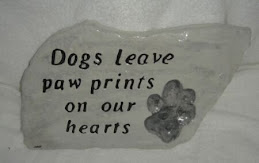
1. If your notice your dog scratching its ears, it doesn't necessarily have fleas. It could have any number of issues including ear mites, yeast, etc and should be seen by your vet.
2. Many dogs are mildly allergic to perfume scented shampoos. Consider using a mild oatmeal based shampoo when bathing your dog or you may end up with an itchy pup!
3. If you notice your dog having an unusually foul odor, don’t assume he or she is not clean. She may have an ear or skin infection. The smell of infection is somewhat comparable to vomit and mildew.
4. Dogs naturally like to play keep-away better than fetch. You'll need to train your dog to play fetch, but not keep-away.
5. Most dogs really don't like to play dress up. Sorry. (Though there are exceptions to this rule)
6. Some dogs need their anal glands expressed or else you will witness a “scooting” behavior where they rub their behinds on the ground. This is a simple procedure that can be done by most groomers or at your veterinarians.
7. Dogs with deep wrinkles need to be washed daily. Dirt can build up leading to odor or infection.
8. Dogs don't understand pointing. They focus on the tip of your finger, not the item you are pointing at.
9. Just like people, dogs have phobias too. Some examples of phobias we've encountered include thunder, stairs, hair dryers, water, lawn mowers, vacuums, balloons, and buses.
10. Dogs aren't really racist. When dogs bark at unknown people, it is often because they are unfamiliar with their body type or skin color.
11. Not all dogs are born swimmers. Some dogs need to be encouraged to swim. Some breeds are more natural swimmers than others.
12. Body harnesses actually encourage pulling. While they may seem like they give you more control, the pressure points on a harness make your dog respond by pulling forward.
13. Dogs dislike being bored and easily get into trouble when left to their own devices. Think of creative ways to keep your dog's mind active.
14. Dogs need mental stimulation as much as physical stimulation.
15. Dogs often react differently to human males and females.
16. Dogs can know you as much by scent as by eyesight (if not more!), and you can help them feel secure when you leave by providing a soft object that has your scent on it. (A sweatshirt or blanket you sleep with)
17. Social status is very important to dogs and many canine behaviors are determined by their attempts to establish their roles (belly up submission, standing tall/over another dog, jumping on, standing ground and not flinching)
18. Dogs can get jealous. They may try and interrupt a hugging couple or bark for attention when you are on the telephone!
19. Dogs can be trained not to beg at the table. Never feed your dog off of your plate as it only encourages begging behavior.
20. Dogs are creatures of habit. They like familiarity and form expectations and schedules.
21. Dogs like to playfully taunt to encourage play (especially keep away). The classic play stance is the “bow”. A dog puts its front paws down on the ground and its tail end up in the air.
22. Many dogs love car rides. Be sure to keep your dog secured with a seat belt or other safety device.
23. Some dogs lick their paws and then rub their paws on their head to clean themselves, much like a cat!
24. Many breeds are escape artists - if you're not careful, your dog might decide to take a swim in the neighbor's kiddie pool, or bring home a new toy. Basenjis are especially known for their ability to escape from yards.
25. An unsupervised dog will get bored in a back yard very quickly. It is never safe to leave your dog unattended in the yard.
26. Dogs bark for a large number of reasons, but often do so to get attention from other people or other dogs. Some other reasons that dogs bark include: to protect their territory, express a need or to initiate play.
27. Dogs communicate with their tail. A wag can mean many things - an aggressive dog may wag their tail, but it will be held high and moving rapidly. A playful dog will also hold his tail high, but it will be wagging in big arches from side to side. Meanwhile a dog that is afraid will hold his tail low and may wag it stiffly back and forth.
28. Most dogs don't like their own poop and will intentionally avoid it.










4 comments:
Some great reminders and tips there. A lot to absorb all at once, but that's kind of the point -- there's more to being a good dog owner than simply filling the bowl and taking Rover for a walk now and then!
- - - - - - -
Jack@PDB
dog beds and more
Appreciate your tips. I used to think that my dog is unclean every time she smells awful. But when I had her checked, our vet said she has something inside her ears. Then I had her treated.
In addition, lesson learned from that experience: leave it to havanese training and grooming experts. HAHA!
I am very grateful to read this excellent information from this blog.Its really interesting.Every one should know this information from this blog regarding the training for dogs.
Personal Protection Dogs for Sale| Executive Protection Dogs
Post a Comment